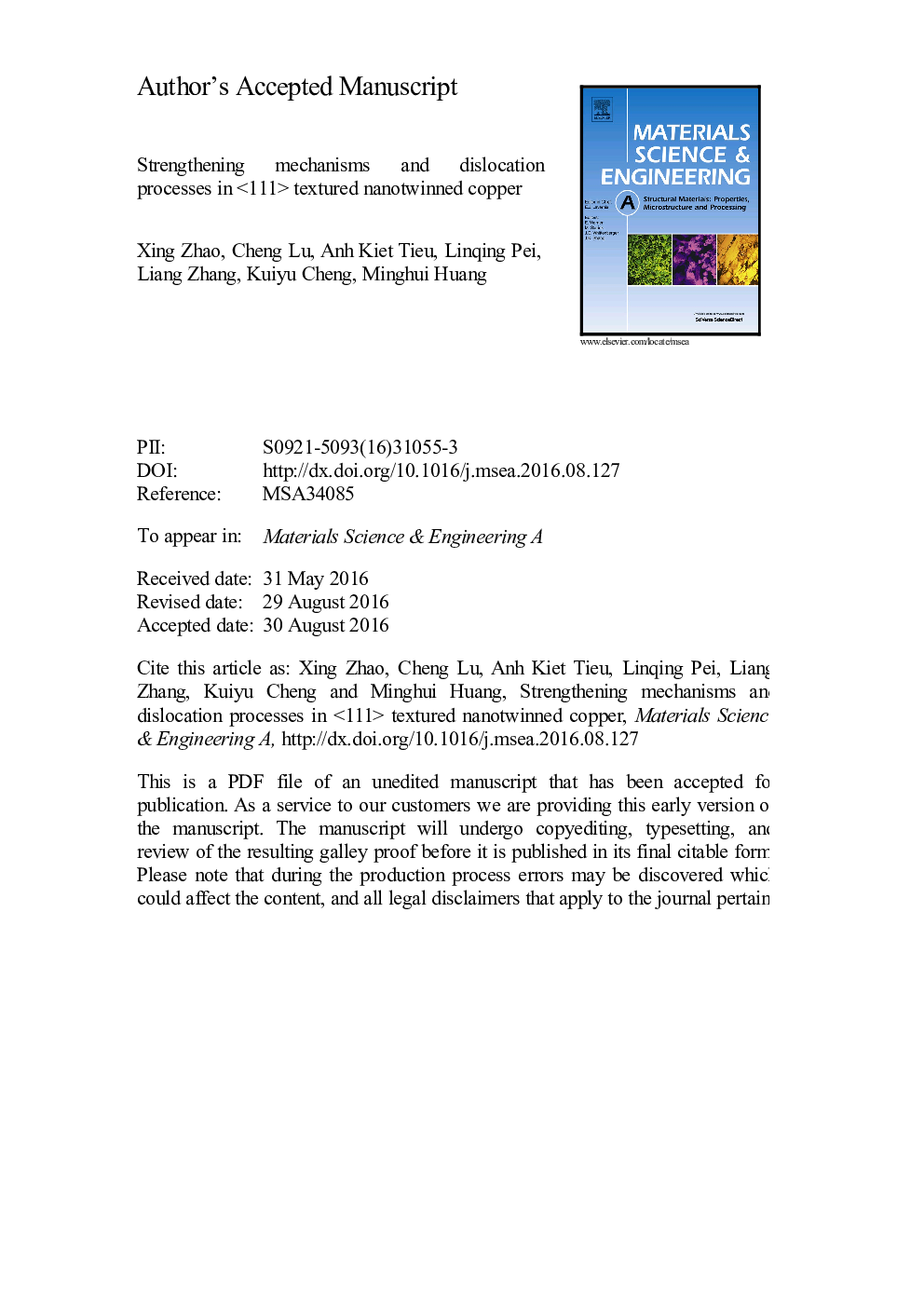| Article ID | Journal | Published Year | Pages | File Type |
|---|---|---|---|---|
| 7974832 | Materials Science and Engineering: A | 2016 | 42 Pages |
Abstract
We use molecular dynamics simulations to elucidate the deformation mechanisms of <111> textured nanotwinned materials under tensile loading parallel to the twin boundary (TB). Our simulations reveal that the tensile strength of nanotwinned Cu increases monotonically as the twin spacing decreases. The strengthening effect mainly results from TB restricting the transmission of dislocations across the TB. Throughout the simulations the transmissions of dislocations across the TBs dominate the plastic deformation. Both direct and indirect transmissions are identified at atomic level. Direct transmission involves either successive transmission of the leading and trailing partials as in the Fleischer cross-slip model or absorption and desorption of the extended dislocation as in the Friedel-Escaig cross-slip mechanism. In contrast, indirect transmission involves the formation of special superjogs. The persistent slip transfer leaves zigzag slip traces on the cross-sectional view and the inhomogeneous deformation leads to the formation of intersecting slip bands on the plane view.
Related Topics
Physical Sciences and Engineering
Materials Science
Materials Science (General)
Authors
Xing Zhao, Cheng Lu, Anh Kiet Tieu, Linqing Pei, Liang Zhang, Kuiyu Cheng, Minghui Huang,
